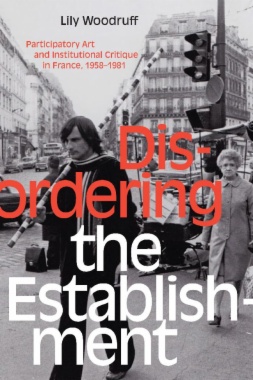In the decades following World War II, France experienced both a period of affluence and a wave of political, artistic, and philosophical discontent that culminated in the countrywide protests of 1968. In Disordering the Establishment Lily Woodruff examines the development of artistic strategies of political resistance in France in this era. Drawing on interviews with artists, curators, and cultural figures of the time, Woodruff analyzes the formal and rhetorical methods that artists used to counter establishment ideology, appeal to direct political engagement, and grapple with French intellectuals' modeling of society. Artists and collectives such as Daniel Buren, André Cadere, the Groupe de Recherche d’Art Visuel, and the Collectif d’Art Sociologique shared an opposition to institutional hegemony by adapting their works to unconventional spaces and audiences, asserting artistic autonomy from art institutions, and embracing interdisciplinarity. In showing how these artists used art to question what art should be and where it should be seen, Woodruff demonstrates how artists challenged and redefined the art establishment and their historical moment.
- Cover
- Contents
- List of Illustrations����������������������������
- Acknowledgments����������������������
- Introduction�������������������
- 1. The Groupe de Recherche d’Art Visuel’s Social Abstractions
- 2. Daniel Buren’s Instrumental Invisibility
- 3. André Cadere’s Calligrams of Institutional Authority
- 4. The Collectif d’Art Sociologique’s Sociological Realism
- Conclusion
- Notes
- Bibliography
- Index
- Color Plates

